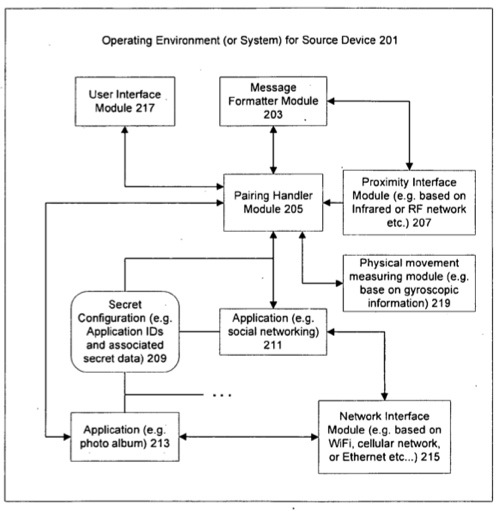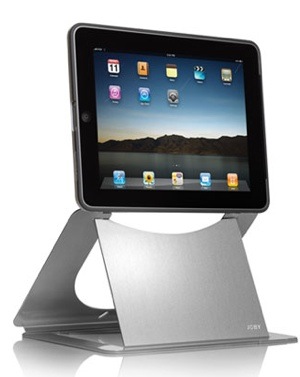A new Apple patent (number 2100278345) shows that Apple is working on ways for securely sharing data over mobile devices. The patent is for a method and apparatus for proximity-based pairing of mobile devices.
The invention relates generally to authorizing communications between network enabled devices. More particularly, it relates to secure instant pairing of mobile devices based on proximity to authorize communications.
A method and an apparatus that establish a first communication channel or pair with a target device in proximity to a source device are described. A pairing message is sent to the target device in proximity to the source device over the first communication channel from the source device. A secret and an identifier associated with an application are included in the pairing message. In response to receiving the secret back from the target device for a second communication channel, pairing data of the application are sent to the target device over the second communication channel. The inventors of the patent are Thomas Matthieu Alsina, Guy L. Tribble and Philipope Dhampeaux.
Here’s Apple’s background and summary of the invention: “With the proliferation of network enabled mobile devices, such as mobile phones, smart phones, wireless headsets, etc., pairing separate mobile devices becomes more and more common. In particular, mobile devices are often paired to share data, such as personal photos, contacts, play lists, passwords or friendship information for social networking (e.g. Facebook application) etc. Usually, such data sharing requires security protection.
“Typical secure data sharing includes an authorization system. Traditionally, an authorization system relies on security mechanisms such as logins, password verifications and/or confirmation mails, etc. For examples, users of mobile phones may need to open applications, go into pairing modes, enter authorization codes, send emails and/or use “add friend” user interface buttons for the mobile phones to share data between each other. However, in a mobile environment, such authorization mechanisms are often tedious and cumbersome to be practically useful.
“Therefore, traditional authorization mechanisms do not provide a simple, elegant and convenient method for mobile devices to share data securely.
“An embodiment of the present invention includes methods and apparatuses that establish a first communication channel or pair with a target device in proximity to a source device. A pairing message is sent to the target device located in proximity to the source device over the first communication channel from the source device. A secret and/or an identifier associated with an application can be included in the pairing message. In response to receiving the secret back from the target device for a second communication channel, pairing data of the application are sent to the target device over the second communication channel.
“In an alternative embodiment, a first communication channel with a source device is established in proximity to the source device. In response to receiving a pairing message from the source device over the first communication channel, an application identified by the pairing message is launched to establish a second communication channel from the application to a remote device according to the pairing message. Pairing data for the application are retrieved from the remote device over the second communication channel. The first communication channel can be a short range IR (Infrared) channel which uses a proximity sensor of each of the source and target devices to create the IR channel, and the second communication channel can be a wireless network such as a WiFi (802.11) or a cellular telephone network or other RF (Radio Frequency) based wireless networks.”



